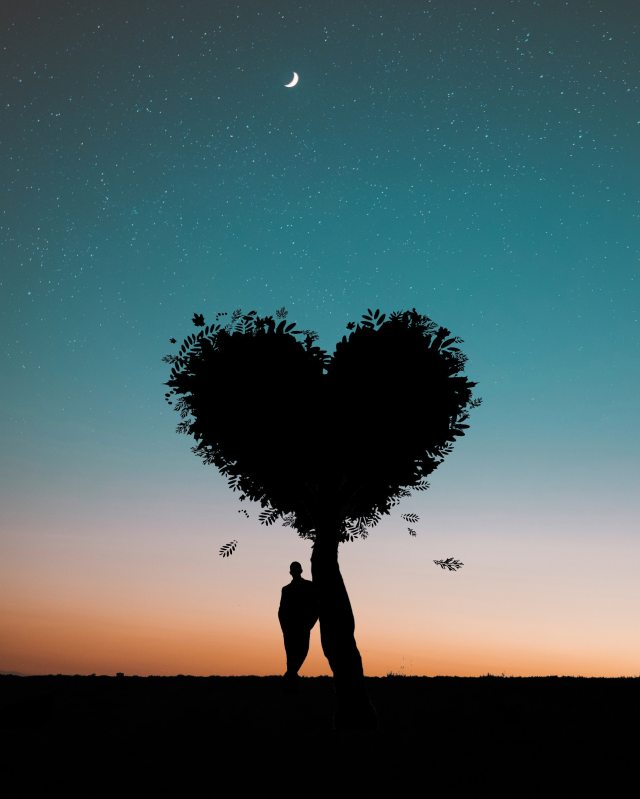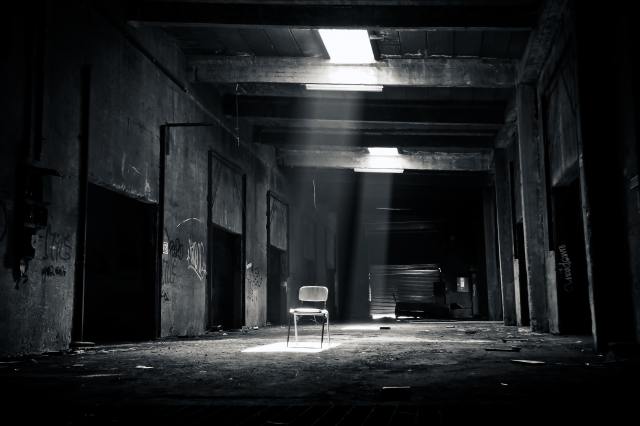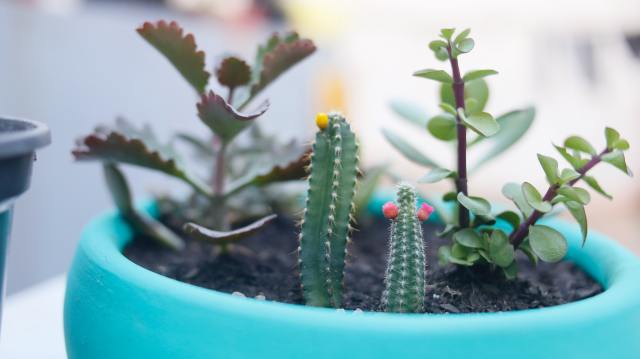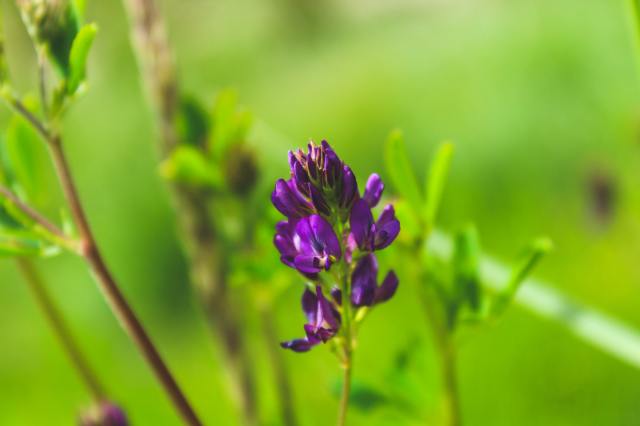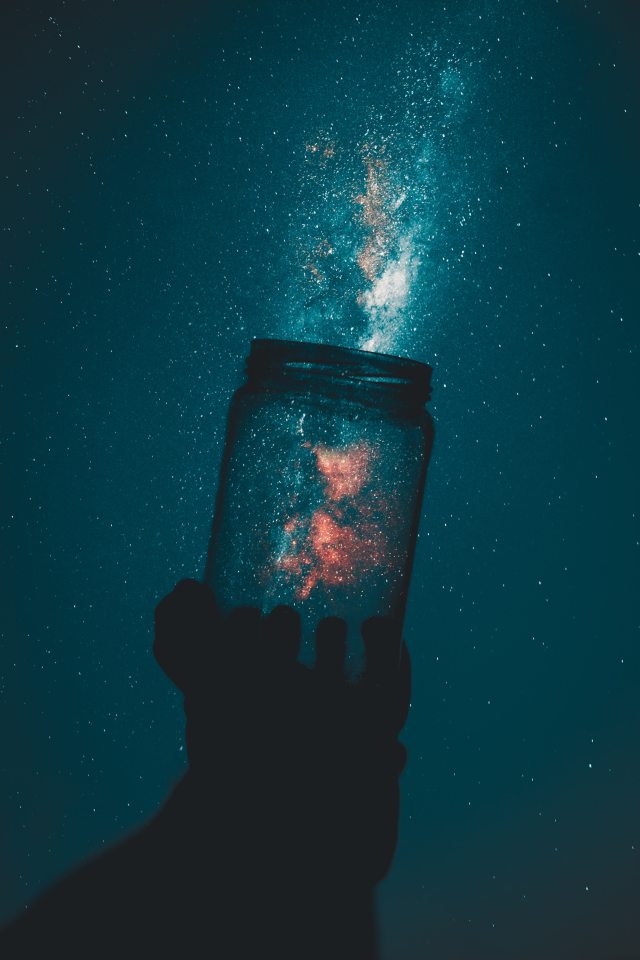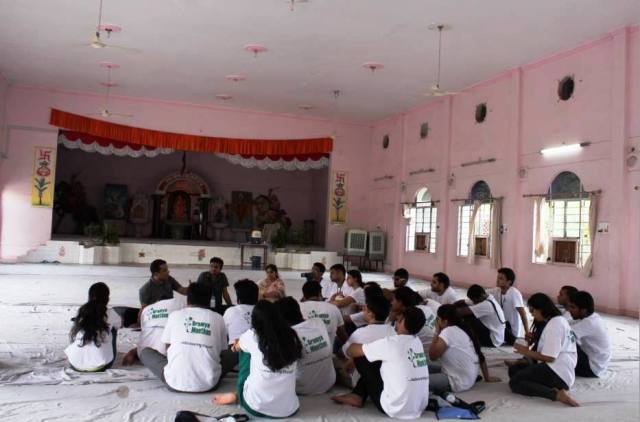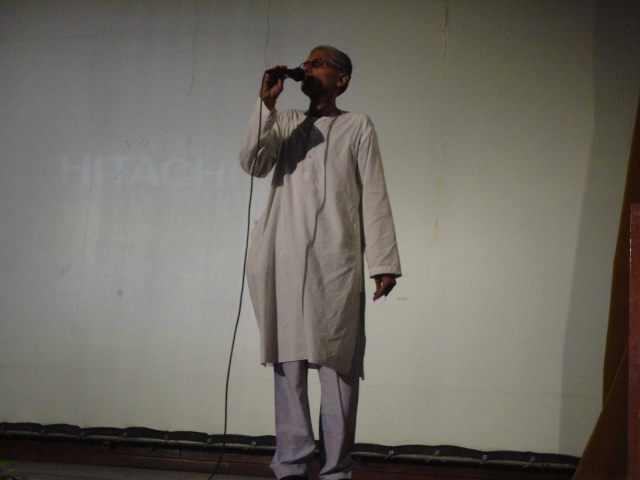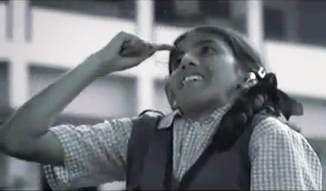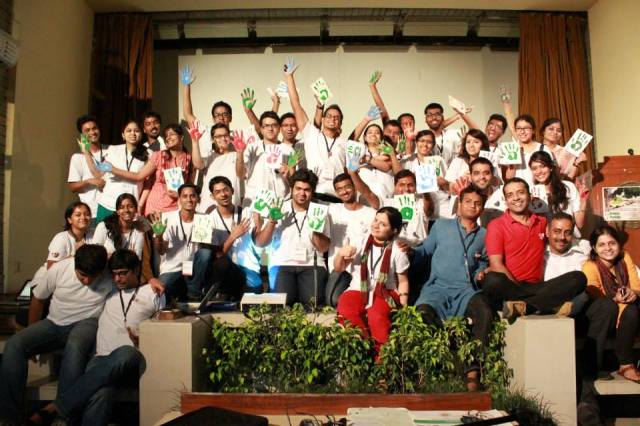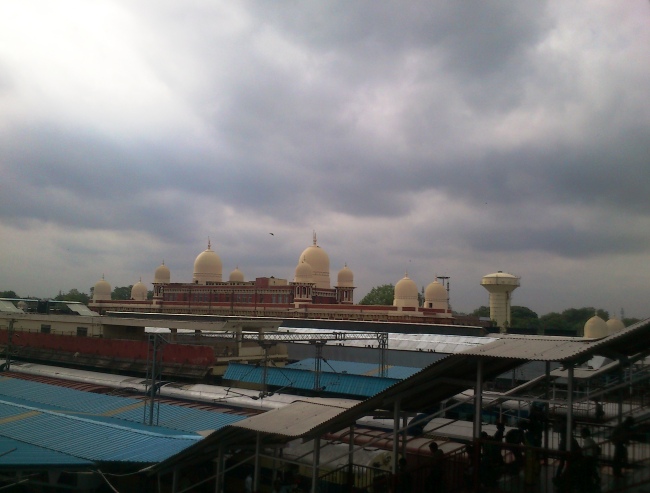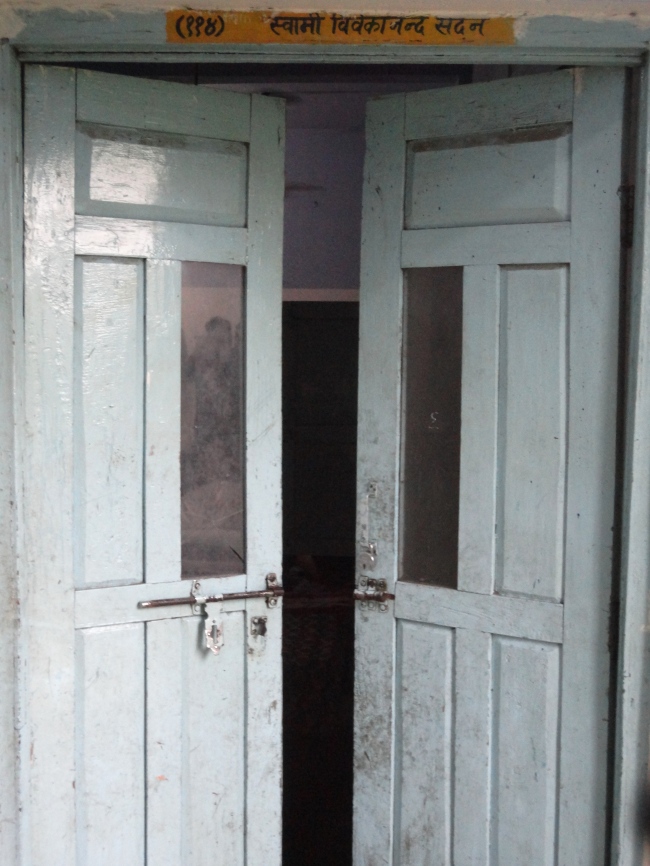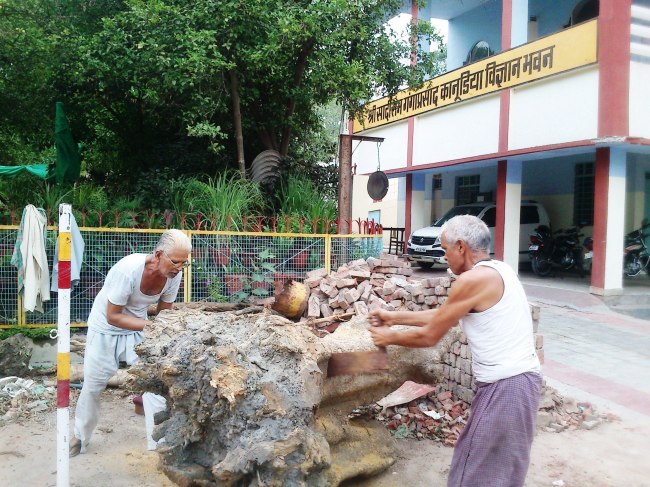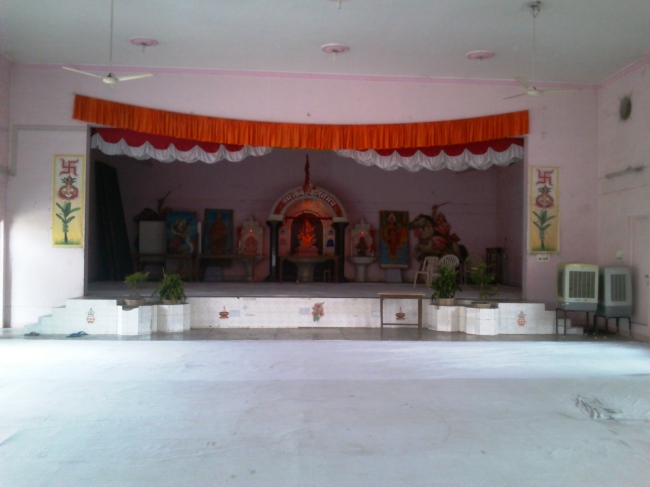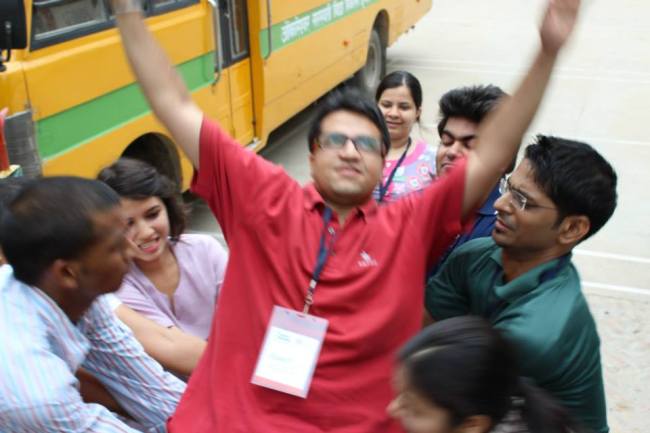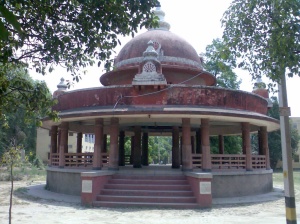“Arise, awake, and stop not till the goal is reached.” – Swami Vivekananda
It was our third morning at Gramya Manthan 2013 program of Youth Alliance. And it was quite different from the previous two days – not just because those were in a city and this one was in a village. But, more so, because of the absence of the need to be conscious of switching off any air-conditioners, fans, and fluorescent lights. And the presence of energizing sunlight which switched on our heart, mind, and soul as we woke up. We didn’t go ‘early to bed’ but still, we acquired the much-desired habit of ‘early to rise’ in a matter of just two days. This happened with me for the second time: previously when I had been to AFSB, Mysore for five adventurous days.
Of priorities and necessities:
The view outside the Kilkaari center where we spent the previous night was not at all ordinary (read artificial). It was completely natural: there were diverse changeagents, proudly dressed up in shiny white Gramya Manthan tees. A few were taking a stroll in the playground, others were brushing their teeth, a couple of boys pumping out water from the handpump and taking a bath in the open. There were others queuing up outside the single washroom that had to be shared by forty odd people. We were a little uncomfortable to use it at the start but necessity emerged as the mother of solutions as well. It was still a much better option than open fields. And it made me think that if a toilet is not covered as a part and parcel of a dwelling unit, then it must be added to the list of basic necessities of life which was at one time limited to ‘Roti, Kapda, aur Makaan‘ (Food, Clothing, and Shelter), but has now been expanded to cover various other material and immaterial goods, particularly the technology-enabled devices and services like the Internet, smartphones, etc.
Of questions and answers:
A few minutes past 0600 hours, we assembled at the Kilkaari center for our morning reflection session. During the initial few of the fifteen minutes that we had to spend with ourselves, I just sat in silence with my eyes opened witnessing the beautiful colors all around me: inside the center – on the walls & roof; outside it – in the form of a centrally planted Banyan tree, scattered patches of green & dried-up grass, fully constructed & painted classrooms on one side and under-construction or apparently abandoned ones on the opposite. One such room attracted my attention and I went towards it as if something from inside that room called me.
It was numbered 21 and when I entered it, I saw broken furniture lying randomly, making it clear that the classroom was not functional . I looked outside the windows, at the blackboard and then at the floor. I was not very surprised but a little disappointed to see a few pieces of paper torn from a book lying all over the floor. I picked up one of the pieces and it spoke about ‘Five-year planning’; on flipping over, I found the ‘weaknesses of small-scale industries‘. Another one talked about ‘industrialization‘ and listed down the advantages of ‘decentralisation‘ on its flipped over side. The next one specified the reasons for the ‘financial assistance required by a farmer‘ and the other side highlighted the topic of ‘agricultural income‘. The last and the smallest bit had the loudest words: ‘institutionalized resources‘. And it clicked to me that those two words were what Youth Alliance and its programs are all about – bringing together the youth and channelizing them as ‘allianced resources forming an institution’, afamily which would serve as a facilitator in finding the solutions to the problems being faced by our country and by the world at large.
The so-far seemingly non-functional classroom number 21 taught me that no classroom is ever abandoned and whenever we enter a classroom with all our heart, we get to learn some valuable lessons. I learnt that the world is a classroom and the questions are always there in front of us, more often than not on torn pieces of paper. We just have to flip over those pieces and we will have the answers.
Of ‘Whys’ and ‘Hows’:
The day was reserved for the changeagents to observe the life of the people in the villages identified by the Youth Alliance team based on its prior research and experience of the region. We were divided into four groups: Education, Health, Sanitation, and Livelihood – the areas which the changeagents were supposed to work upon. The first two groups were allotted Tishti village and the latter ones Paliya and Gangadeen Nevada respectively.
The Education group, of which i was a part, stood at the main gate of Shashtri Ji’s school where Kilkaari center is located. And the members were being told the names of the head of the family with which they were to spend the whole of the following day (to get an overview of how a day in the life of that family takes course) and the night (on a volunteer basis).
There was an expression of excitement mixed with a lot of inquisitiveness on our faces as none of us had ever stayed in a village for an entire day. We left Kilkaari with all the good wishes from the team and other groups and were escorted to the village locality by one of the team members and a facilitator from the local community. To the villagers, we were like foreigners dressed in Indianized western clothes, carrying the Gramya Manthan sling bag across our shoulders. We had hardly walked form a few hundred meters on the roads logged by rain water amid the people’s questioning eyes that it started raining heavily. Some of us took shelter in a small shop and the others in a nearby house. When it stopped raining, we moved ahead and it turned out that the house where some of us took shelter was the one where I had to spend the rest of my day. I was introduced to Aunty ji who was the eldest family member present in the house at that time. the others wished me the best and moved on to meet their new families to be.
I was now surrounded by Aunty ji, another lady from the neighbourhood and a few kids. All the eyes were on me and were filled with some questions, a lot of tales to be told and a little hope that our team would do some good. When the surprised ladies asked me the purpose of my visit from a place “as far as Madhya Pradesh” to their “small village“, I told them that our team had members who had come from as different and far-flung parts of the country as Kerala, Andhra Pradesh, Maharashtra, Gujarat, Assam, and Delhi. And that one of us did not even understand Hindi. I shared with them that all of us had our own reasons to come and see the villages, that none of us had had a chance to stay in a village and experience the life of a village community. And that such exposure would help us in understanding the real problems beinfg faced by the people at grassroots level and in generating ideas for sustainable and effective solutions to those problems.
After a few such exchangesof Qs and As, I turned towards the kids who were all listening to my talks with complete attention. I asked the eldest one among them about his school and the village. He was Anuj, a calm boy with shiny greenish eyes. When he told me that he had recently received his highschool results and had scored well, the proud expression on his mother’s face reflected her love towards her children and her belief in the power of education.
The ladies carried on with their daily household chores while I started mingling with their kids asking their names and their favorite games. When I asked Anuj about his likes, dislikes and what he wished to study after highschool, it was not very shocking or rare but a little saddening that even though he had scored over eighty percent marks in highschool, he was not clear about his future aspirations and his interests.
This is a sad stage at which our education system stands – where higher importance and more attention is showered on getting good grades rather than on building good thoughts – asking the educated ones to free it from these shackles and take it to a stage where it adds new vistas to every student’s overall life and not just the academics. And this can happen only when it caters to the Whys before imposing the answers to the Hows.
On this day, when Youth Alliance is celebrating its fifth year of existence, a visit through the memory lanes of my journey with it has led me to imbibe a new consciousness:
a new consiousness of priorities and necessities;
a new consciousness of questions and answers;
a new consciousness of Whys and Hows.
